#zany brainy
Explore tagged Tumblr posts
Text
My newest zines
Here are zines I made in the last couple months. These are all available for purchase in my Etsy shop.
Playground games in the 1990s - A mini zine about recess activities that were popular in elementary school. Pros and cons are listed for each game, with small illustrations on each page.

An Incomplete History of Zany Brainy - A 20-page zine about a U.S. retail chain from the 1990s. These stores focused on affordable, educational toys for children.
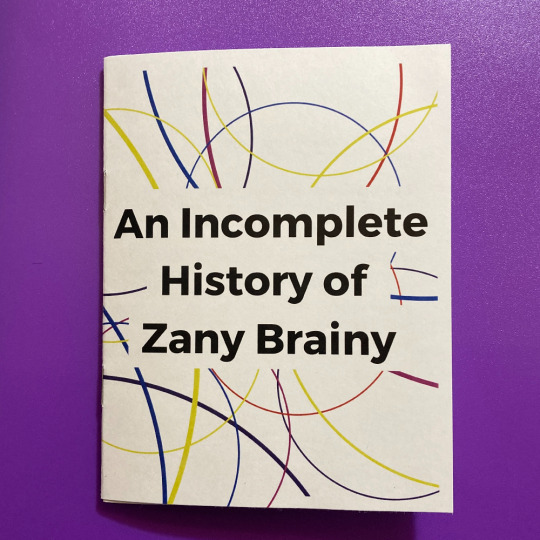
This zine is also available as a digital version on itchi.io. You can download it for free or pay what you want.
Things we wouldn't have to worry about if we didn't depend on cars - A mini zine about car-related stress.
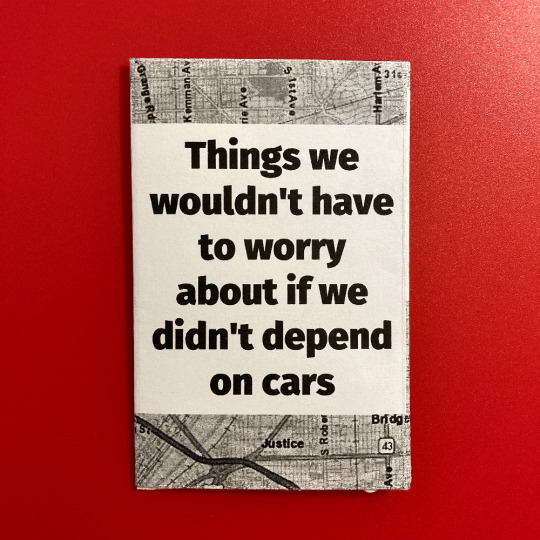
8 notes
·
View notes
Text

RIP Zany Brainy 1991 - 2003.
#zany brainy#anxiety#anxiety relief#mental health matters#wacky art#fun#kids toys#beanie babies#1991#2003
5 notes
·
View notes
Text
some of these look badly cropped side by side i'd just click the images to read





more snippets from the thing i didn't finish. my favorite parts i wrote for it. nat's an adult here so i assume this was meant to be pre-s5. i referenced archives of evil as seen in the previous post, but i would've just cut out those references entirely. i wasn't planning on the smurflings or grandpa and nanny being in this specific story at all. they aren't even together yet here btw. they had a Best Friend Breakup. greedy has a one-sided crush throughout the whole thing though </3
#the smurfs#smurfs#hb cartoon#greedy smurf#smurfs oc#zany smurf#papa smurf#vanity smurf#tailor smurf#tracker smurf#brainy smurf#clumsy smurf#natural smurf#hefty for a millisecond#tracker speaking earned him a tag at the least#my writing#queue
10 notes
·
View notes
Text
Ill never be able to step inside a Club Libby Lu ever again...

1 note
·
View note
Photo
back in the day you got one of these from zany brainy

639 notes
·
View notes
Text


Aaliyah @ The Zany Brainy Education Works Fundraiser/Celebration Event (2000)
464 notes
·
View notes
Text
Just finished 1994's Junior - a fantastic film, highly recommend watching for the first time or revisiting especially for omegaverse fans.
If the story took place in an omegaverse au it would be labeled as "non-traditional" for sure.
Alex (Arnold Schwartzenegger) as the big buff and super sweet omega. Larry (Danny DeVito) as his brainy/zany/supportive beta best friend. Diana (Emma Thompson) as Alex's alpha love interest, who is fun, clumsy, scattered, and loyal. Angela (Pamela Reed) as Larry's ex - also a beta.
You've got everything in there. The omega male who isn't feminine, submissive, or demure. The alpha female who isn't masculine, tough, or intimidating. A fun beta x beta relationship. Male omega and female beta pregnancy.
Even if you aren't an omegaverse fan, this is still a hilarious plot with lots of laugh out loud moments, a lot of heart, and will leave you with a smile on your face.
#Junior#Junior Film#omegaverse#movie review#omegaverse content#a/b/o#a/b/o dynamics#omegaverse au#a/b/o headcanons#a/b/o au#omegaverse headcanons#omegaverse dynamics#omegaversetheory
12 notes
·
View notes
Text
when i was a little kid in the pre-mozart era of parenting it was all about how playing with physical toys was going to develop your coarse and fine motor skills and this was going to spin up all the gears and charge up your internal circuitry to make your brain more cognitively powerful. there was a e.g. a popular toy store in the 90s called "zany brainy"
however, my coarse motor skills are shit which can probably be attributed to the fact that i learned to play video games before i learned how to walk and yet apparently i had no trouble with academics so maybe attention is all you need
6 notes
·
View notes
Text

Team Kit (Kabo and Pip) Intro
“I'm Kabo, I thinky that I'm the best. With my best friend, Pip, we'll beat the rest!"
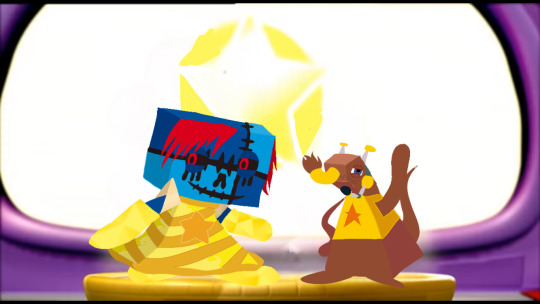
Team Ninki (Zobie and Snout) Intro
“I’m Zobie! (and I’m Snout!) We're cool, we're neat. With skill (and sprouts) we're the team to beat."
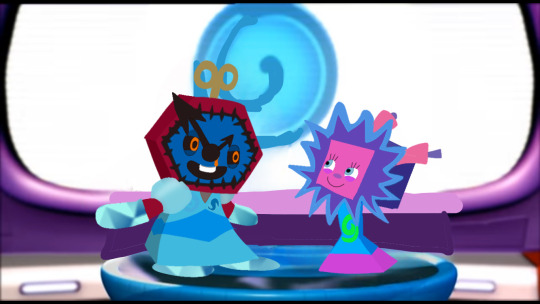
Team Twist (Quicky and Kaboodle) Intro
“I’m brainy! (I’m zany!) We're Quicky and Kaboodle! (I'll electrify you!) I'll use my…noodle?”
#midnight horror school#netflix#netflix anime#netflix jr#netflix kids#mhs#kerwhizz#team kit#team ninki#team twist#mhs kabo#kabo#pip#mhs zobie#zobie#snout#mhs quicky#quicky#kaboodle
6 notes
·
View notes
Note
Nadja found a new store called Zany Brainy that all the nerdy and neurodivergent kids frequented. She told Shizuko Alex and Rini and now all four kids are begging their parents for a raise in their allowances
The kids were immediately hooked on the idea and a huge bonus in their allowances. $5 whole dollars!
2 notes
·
View notes
Note
I think I've seen 3 or 4 live action adaptations of Snow White and, frankly none of them have impressed me, and nothing about the upcoming version has me excited. Compare this to Cinderella, which has had many many adaptations. Some of them great. Some of them not so great. I don't understand why they have such a hard time adapting Snow White.
I completely agree- Cinderella, generally, seems to take to better translations than Snow White depictions which, in my opinion, is why the 1937 film is so special. I think with Cinderella, with as specific as it is, there are certain themes that could be interpreted in a more broad way (abuse, the under dog, rags to riches) and that's why it fares better. Snow White, on the other hand, is never really understood by the people who remake it. Like, watching interviews of Kristen Stewart and Lily Collins talk about the character, nothing they're saying is rooted in the fairytale princess and you could interchange any princess or female lead into what they're saying and it'd be passable. That's the frustrating thing, too, in all the people supporting Rachel Zegler's misreading of the character. They say things like "Snow White WAS weak, and that's okay! It's time to change" or they go back to the original story and all paint her as stupid for the three attempts on her life and they literally all parrot the same "she was a reactive character that things happened to and she never moved the story forward in a meaningful way!" And those things aren't true, especially in the Disney movie, but even in the original story. People just don't know how to read fairytales anymore and all these defenders, and Rachel herself, are picking up a story that never connected with them and revisiting it after decades spent without it with the same really basic and flawed take. That's why it's imperative that people who actually enjoy the stories they're telling are the ones doing so. Do you know how many countless Snow White collectors and researchers and museum curators actually do understand and could've served this production way better? But, back to your original statement, I think people struggle with remaking Snow White because they're operating under the false assumption that her character is a blank slate that they have to build from scratch and that isn't the case and is why Snow White, herself, is nowhere to be found outside of the original animated Disney classic. Also, the classics- Snow White, Cinderella, and Aurora- are the most difficult to cast because of how natural they are as characters. They don't have a shtick to fall back on or one word to describe them- they're nuanced. You can't reduce them to the 'zany' girl, or the brainy one or the nerdy one or the feisty one. There's so much to them and I think people have gotten used to the characterizations that are reliant on one attribute, whether it's a single defining characteristic or interest, and using that to levy their interpretation.
11 notes
·
View notes
Quote
A fun, fast-paced, humorous mystery about a brainy, relatable heroine, a government experiment gone wrong, and the zany world of T.O.P.S.E.C.R.E.T. espionage… My name is Julie Richardson, and if you'd told me one week ago that I'd be racing through the sewers of Paris in search of a golden thumb drive to stop an Evil Villain from destroying the world, I'd have thought you were describing some off-brand James Bond film. Unfortunately for me, I had to go and *accidentally* trigger a dangerous government experiment that turned me into the most sought-after source of classified intel on the planet. I used to be worried about my GPA and graduating college at the top of my class. Now, I've got bad guys chasing after me, so-called "good guys" trying to experiment on me, and Evil Villains threatening to cut out my brain! The good news is, there's a chance I could get my normal life back. The bad news is that chance is slim to none. Forced to go on a life-threatening government mission? Check. Accompanied by the world's most handsome self-absorbed spy? Check. A plan? Not even close. Welcome to T.O.P.S.E.C.R.E.T.
Welcome to The Giggler - by Alexa Tuttle - The Giggler
4 notes
·
View notes
Text
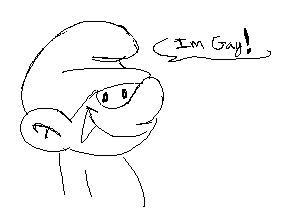
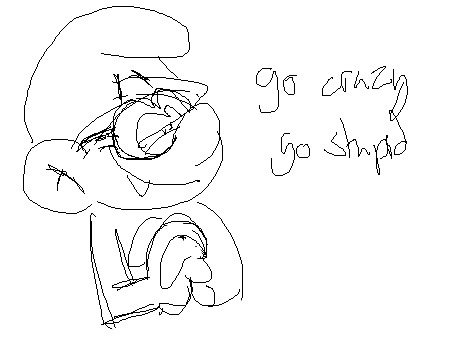
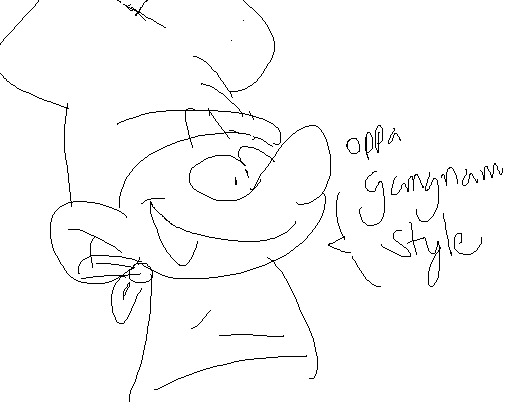
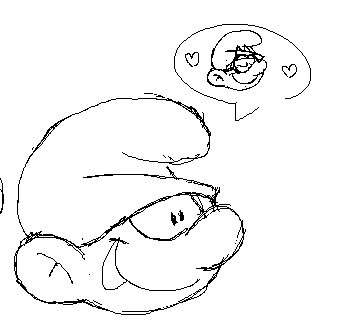


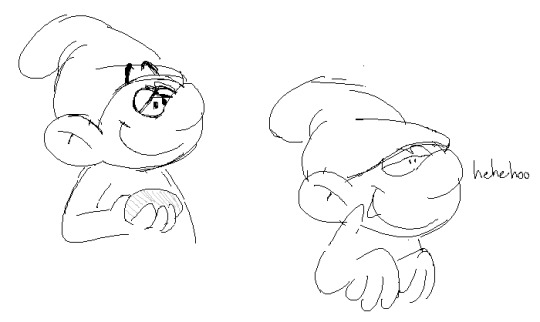

more old art
#the smurfs#smurfs#hb cartoon#clumsy smurf#brainy smurf#brumsy#greedy smurf#zany smurf#smurfs oc#my art#edit: sorry forgot this still had the azrael tag i removed an image
80 notes
·
View notes
Text
A zany Word of the Day

Today’s Word of the Day is really zany. Really.
To find out how “zany” became part of the language, we have to climb into our Wayback machine and travel to Italy in the 16th century, to take in a performance of the Commedia dell’arte. The popular theater group was noted for a lot of improvisation, but also for a group of stock characters.
The Commedia had four basic groups of stock characters or “types” who were easily recognizable by the masks they wore. They were the Vecchi, or wealthy old men who, like wealthy old men everywhere, were the masters, and most often depicted as greedy, villainous know-it-alls. Then there were the Innamorati, young lovers from the upper classes. They were joined by Il Capitano, representing swaggering, braggadocious military men.
Finally, wearing a mask with a long, pointed nose, there was the character known as Zanni, the clown or harlequin, a member of the servant classes who was both brainy and zany, a prankster who spent his time mimicking and making fun of the other characters.
Zanni was, jn the Venetian dialect, a form of the name Gianni, short for Giovanni (or someone we in English would call “John.” So if your name is John or Johnny or Jack, I guess you are automatically zany).
After a while, everyone in Europe knew all the stock characters – the old men Pantalone (who wore, yes, pantaloons) and Il Dottore (the Doctor), Scaramouche the boastful rogue, and Zanni the clown. In the 1590’s, when Shakespeare wrote “Love’s Labour’s Lost” he introduced the word “zany” to the English language, based on the character Zanni.
Speaking of authors who had a way with words, a critic once described a book written by Terry Pratchett as “wacky and zany.” Sir Terry took umbrage at that and responded that the book had “no whack and very little zane.” Perfect.
6 notes
·
View notes
Text
Roofus the red cat, I've had him since Zany Brainy closed in 2003. I miss that little toy chain!

If yes or used to please say in the tags whats it's name,what animal it is and how old it is"
48K notes
·
View notes
Text
Sculpting Einstein’s Hair: When Art Met Science in a Hysterically Dramatic Tango
Ladies, gentlemen, and all the bewildered students in between, gather 'round as we embark on a zany escapade into the wild world of scientific sculpture! Picture this: a realm where the elegance of Michelangelo’s David meets the brainy complexities of Einstein’s theories. Hold onto your hats (especially if they're tinfoil), because we’re diving headfirst into the tactile wonderland where science education gets a wild, wacky twist through the art of sculpture.
Ah, the tactile appeal of sculptures—like a good meme, they just beg to be touched, shared, and obsessively analyzed. Imagine trying to grasp the abstract intricacies of quantum mechanics, only to be saved by a sculpture that translates this mind-boggling concept into something you can literally wrap your hands around. This, my dear students, is the genius of using sculpture to teach scientific concepts. It’s like turning those dreadfully dull textbooks into a thrilling episode of "Stranger Things," but with less Demogorgon and more Democritus.
Now, let’s get our hands dirty with the educational value of 3D models. It’s like when you finally get your hands on that LEGO Millennium Falcon set, only to realize that the process of building it is as fascinating as the final model. Physical models enhance understanding by making abstract concepts, well, less abstract. You see, when you’re staring at a 3D model of a DNA strand, it’s not just a bunch of letters in a book—it’s like having the genetic code doing the Macarena right in front of you.
Hands-on learning? Oh, it’s the bomb-dot-com, folks! It’s like those science fairs where baking soda volcanoes erupt with the ferocity of a million Mentos in Coke bottles. The benefits are off the charts. Studies have shown that when students engage with material kinesthetically, it’s like they’ve been handed a backstage pass to the concert of knowledge, VIP access included. They’re not just passive spectators—they’re part of the show, wielding their sculpting tools like rock stars with guitars.
Creating scientific sculptures is an art form in itself. Imagine combining the meticulousness of a neurosurgeon with the creativity of a street artist, and you've got yourself a scientific sculptor. Techniques and materials? Think everything from the classic clay and plaster to the futuristic 3D printing and recycled materials. And let’s not forget those giant, Instagram-worthy installations made from thousands of plastic bottles that demonstrate the horrifying beauty of oceanic pollution. Talk about a statement piece!
Ever heard of the Genghis Khan exhibit at the Field Museum in Chicago? They had this insane, larger-than-life horse sculpture made from repurposed car parts, each piece meticulously crafted to represent the parts of a Mongolian warhorse. That’s right, folks, scrap metal turned into a lesson on the destructive power and historic significance of Genghis Khan’s cavalry. It’s like watching “Mad Max” while learning about the Silk Road—utterly bonkers and entirely educational.
But why stop there when you can have interactive exhibits and installations that turn science museums into playgrounds of the mind? Imagine stepping into an exhibit where you can interact with a giant model of the human brain, lighting up different areas by solving puzzles. It's like playing a real-life game of "Operation," but instead of a buzzer, you get the sweet dopamine rush of learning. These installations don’t just inform; they engage, entertain, and sometimes even humiliate (in the best way possible, of course). Ever tried explaining photosynthesis while inside a greenhouse installation that’s basically a botanical escape room? It’s pure, unadulterated chaos—and ridiculously fun.
The impact of these interactive installations on public understanding and engagement is like that viral TikTok dance everyone keeps doing—inescapable and immensely gratifying. They bridge the gap between dry academic concepts and the lively curiosity of everyday folks. It’s the difference between reading about gravity and actually feeling it yank you back to Earth when you jump off your cousin’s roof trying to be Spider-Man (disclaimer: don’t try this at home, kids).
And just when you thought it couldn’t get any cooler, enter the future: digital and augmented reality (AR) sculptures. Imagine using an AR headset to watch as the periodic table of elements comes alive, each element animated with personality quirks that would make them fit right into "The Office." Innovations in digital sculpture and AR are turning science education into a spectacular light show of holographic lectures and virtual dissections. It’s like “Black Mirror” but with more science and less existential dread.
With AR, students can walk around a digitally rendered solar system, manipulating planets with a flick of their wrists, or dive into the human body’s inner workings, dodging white blood cells like they’re in a video game. This is science education with art, where the line between reality and imagination blurs into a delightful spectacle of knowledge and creativity.
In conclusion, let’s recap the wild ride we’ve been on. Scientific sculpture takes the cake (and eats it too) in transforming how we learn about the world. From hands-on models that make neurons as tangible as spaghetti noodles to interactive exhibits that turn museums into fantastical learning arenas, the impact is undeniable. And as we step into the digital age with AR and digital sculptures, the potential of scientific sculpture in education is limitless. It’s like binge-watching a Netflix series that’s actually good for your brain. So, next time you see a sculpture, remember: it’s not just art—it’s a riotous classroom where science comes to life in the wackiest, most wonderful ways possible.
0 notes